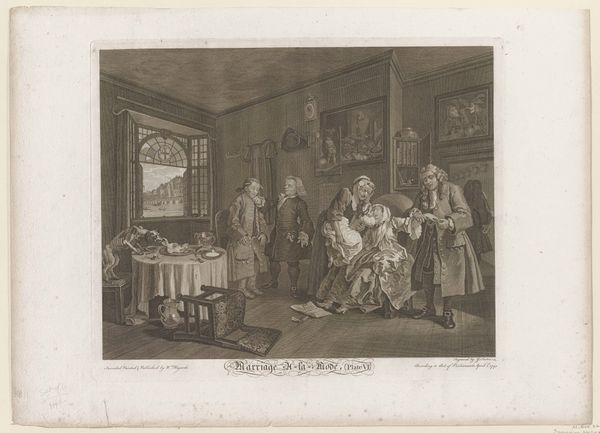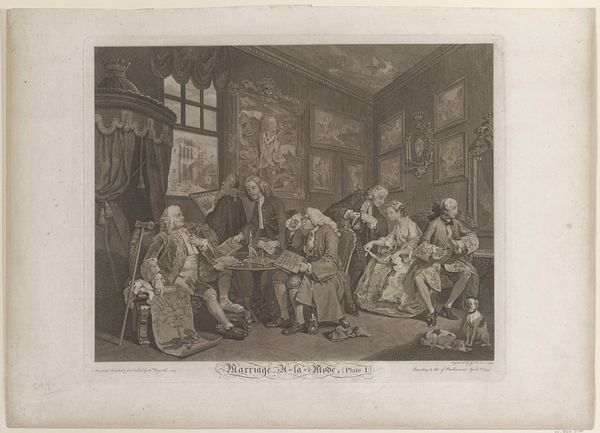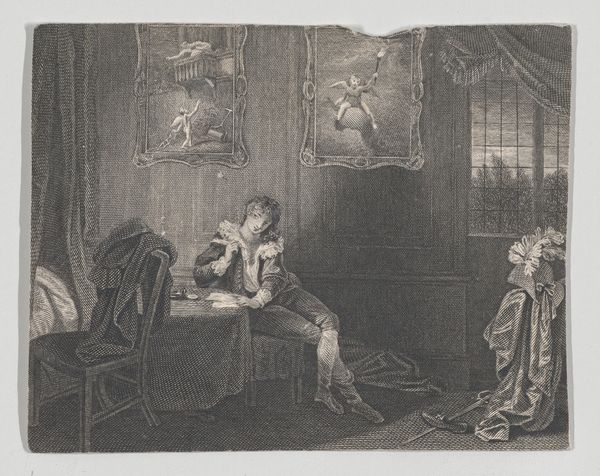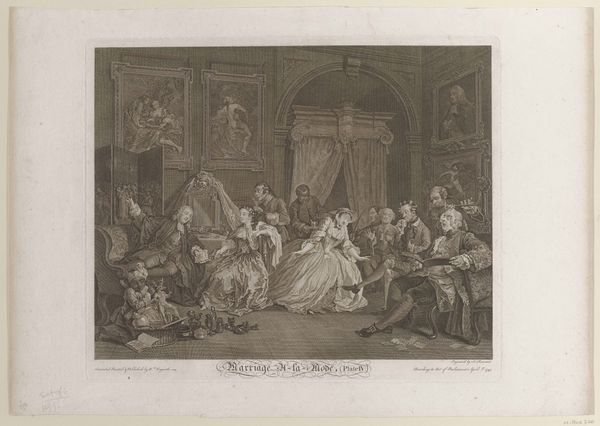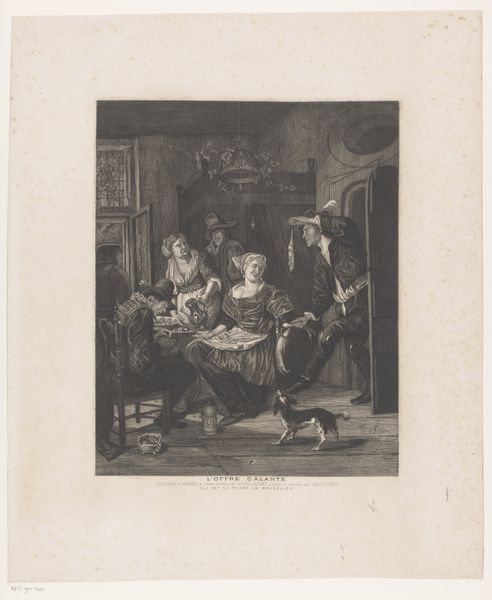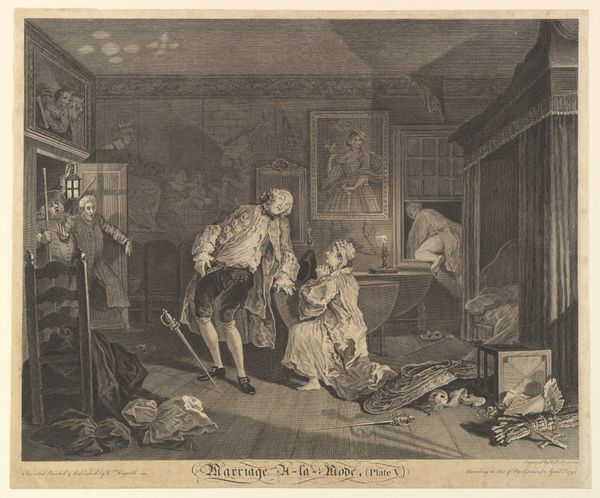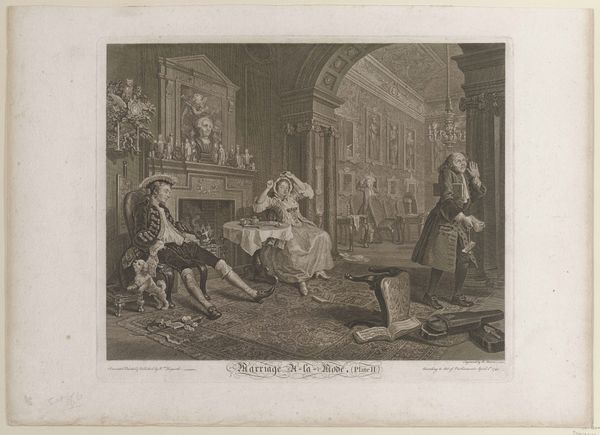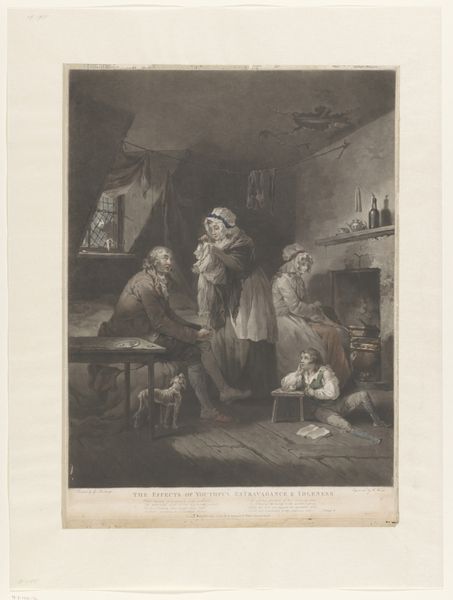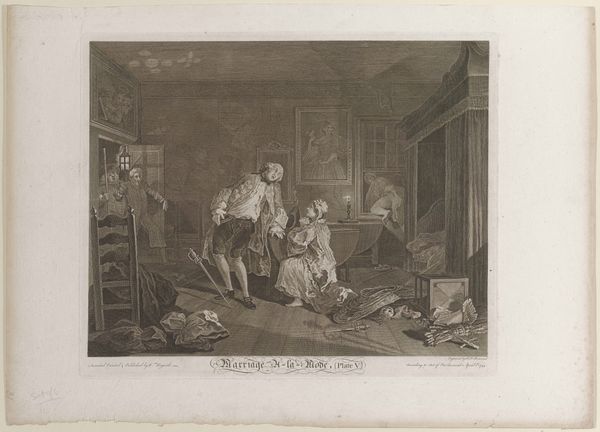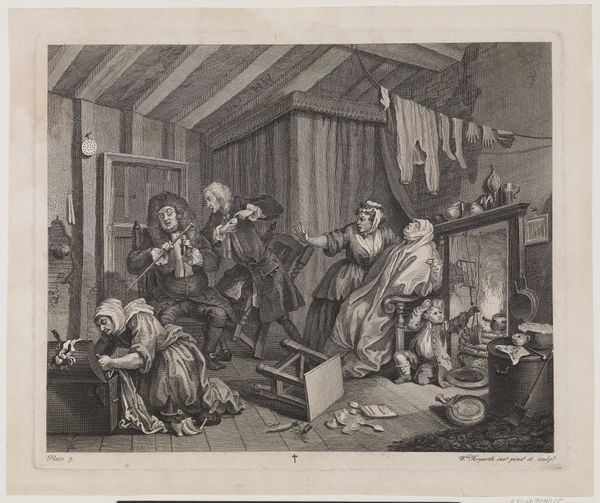
drawing, print, ink
#
drawing
#
narrative-art
#
baroque
# print
#
figuration
#
ink
#
pencil drawing
#
cityscape
#
genre-painting
#
history-painting
Dimensions: sheet: 12 7/16 x 14 15/16 in. (31.6 x 37.9 cm)
Copyright: Public Domain
Curator: Welcome to gallery 618, where we have William Hogarth's print, "A Harlot's Progress, Plate 2," created around 1732. It’s a small work, meticulously rendered in ink. Editor: My first thought is – what a dramatic, almost chaotic composition! There’s a real tension conveyed through the body language of the figures and the shattered objects scattered about. Curator: Hogarth intended these prints to be narrative, like scenes from a play, inviting the viewer to interpret the events and the characters' motivations. In this scene, we see the consequences of Moll Hackabout's "progress," her fall from innocence to a life of prostitution in London. Editor: I notice the composition guides the eye carefully – from the intruders peering in the doorway to the central figures arguing near the overturned tea table, then finally to the black servant positioned on the far-right. It’s all very theatrical. The interplay of light and shadow also creates visual interest and hierarchy. Curator: Indeed. Consider, too, the context. Prints such as these provided social commentary and, significantly, a relatively accessible art form for a broader audience than traditional paintings allowed. Hogarth sought to influence public morality with these pictorial essays, distributed throughout London’s print shops. Editor: So it served as a mirror reflecting the socio-political mores of the day. The interior furnishings betray wealth, perhaps ill-gotten. This almost allegorical staging is highly moralizing. Curator: Hogarth clearly juxtaposes the superficial trappings of affluence with the deeper moral decay that he observes around him. The "Harlot's Progress" resonated strongly at the time. It brought the artist widespread acclaim, catapulting him to great prominence. Editor: Analyzing the relationships between form and subject gives us a fascinating view. This drawing certainly succeeds in being simultaneously chaotic and strangely controlled in its design. I wonder if viewers were entertained, challenged, or simply titillated? Curator: Hogarth aimed to do all three. His work reveals much about eighteenth-century London and the commercialization of art and society. Editor: Reflecting on "A Harlot’s Progress, Plate 2" provides a lens through which we observe Hogarth's unique vision. His prints reveal much about art as a tool for engaging complex social and artistic contexts.
Comments
No comments
Be the first to comment and join the conversation on the ultimate creative platform.
